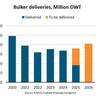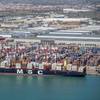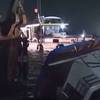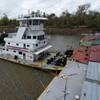With an annual freight volume of nearly 9 million TEU the Deurganck dock is by far the main centre of container handling in the port of Antwerp. But this tidal dock on the left bank of the Scheldt is also well on the way to becoming a hotspot for innovation.
Thanks to a “smart quay” and an automatic sounding boat, shipping operations and berth maintenance in Antwerp’s largest dock will become a good deal more efficient.
“The smart quay will enable us to make more efficient use of the berths available in the dock. And the automatic sounding boat will also make berth management more effective and pro-active, with the emphasis on prevention rather than cure,” explains Piet Opstaele, Innovation Enablement Manager for the Port Authority.
In ways such as these Antwerp is laying the foundations for the “smart harbour”, the port of the future where smart technologies are used to make both land-side and water-side operations more efficient.
“The smart harbour in turn forms part of the ’Capital of Things’ that was rolled out last year by the City of Antwerp in collaboration with the Port Authority, the University of Antwerp and the innovation specialist imec. This took our ambitions to a whole new level, with the first practical initiatives coming on line just a few months after signature of the agreement,” Opstaele continues.
Ships arriving in the port are now assigned a specific berth number on the quayside. “You can compare it with a car that enters a paying car park where there are designated parking spaces. If you park outside the boundaries of your allotted space then you are taking up not just one but two slots, thus reducing the overall capacity of the car park. The same applies to ships that ’park’ alongside the quay,” Opstaele explains further.
One of the Port Authority’s responsibilities is maintaining the maritime infrastructure. Piet Opstaele outlines the challenge: “A large part of this maritime infrastructure is under water, which makes it very difficult to inspect. It frequently happens that we notice that something is wrong when it’s already too late, for instance if a lock gate refuses to operate. Diagnosing the fault and carrying out the necessary repairs means that the lock has to be temporarily closed, thus interfering with port operations. We want to reduce such situations to the absolute minimum.”
The Port Authority is calling upon various technologies for the necessary smart maritime inspections. The first is Waterview, by analogy with Google’s Streetview.













